
Early Gems of American Music Writing:
A Reading List
Eric Weisbard Recommends Music Literature Spanning From
the 18th Century to the 21st
The provisional status of popular music authors, due to identity, funding, or creative obsession, shaped their output. Enduring stuff came from outsiders: women and/or writers of color, authors displaced by sexuality or partial education, deviants from orthodoxy. Efforts to fix music’s meaning by discipline or genre have often meant less than a glimpse useful enough to pass around the way DJs would a breakbeat, comparable to the verse a songwriter distills from experience to suggest a world.
New forms required new interpretations: think Bob Dylan’s Nobel Prize and the is-he-literature? debate. Music writing’s preemptive verbiage line-cut more traditional scholarship. Since the 1990s, academics have created a more formal literature: studies that extended other studies, shared keywords, university press book series. But professionalizing should not mean dismissing earlier writing. Hybridity and patched-together methods are not a weakness of popular music literature—they’re its essence. Rereading expansively can be as revisionist as wholly new exploration. Here’s a quick look at some back pages.
*
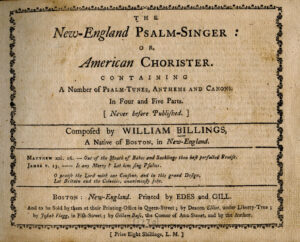
William Billings, The New-England Psalm-Singer (1770)
Here is a particularly American place to begin. Billings, 24 and a tanner by trade, published the first collection of tunes by an American colonial, with a frontispiece by Paul Revere no less and a lyric for “Chester” that would soon be sung in the Revolution: “Let tyrants shake their iron Rod / And slav’ry clank her galling chains / We fear them not; we trust in God / New England’s God forever reigns.” As notable a writer about culture as a writer of culture, Billings emphasized his youth and musical inexperience, with an air that still comes off as sarcastic: “I think it best for every Composer to be his own Carver.”
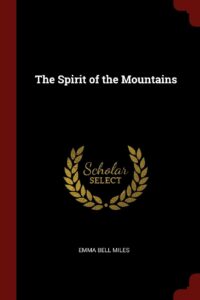
Emma Bell Miles, The Spirit of the Mountains (1905)
If Walt Whitman put “Song of the Open Road” into our literature, Miles’s ballads were the closed one. Moved by teacher parents to the Tennessee mountains for her health, she was educated on Thoreau and a ten-year pile of Harper’s, married a local man, and befriended the area’s literary MacGowan sisters, who got her “Some Real American Music” into Harper’s itself. That led to a book contract—and career stasis. Five kids, hubby who never earned, youngest dead for no doctor, living in tents, tuberculosis, dead in 1919 just shy of 40. But she invented Americana. Her journals, poems, and stories were finally fully released a century later, as her life on Walden’s Ridge proved as remarkable as any at Walden Pond.
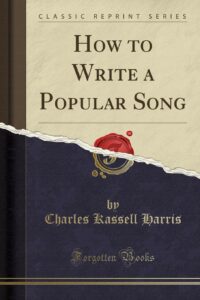
Charles Harris, How to Write a Popular Song (1906)
This category of books sold their ability to help Americans sell their ability—an Ouroboros of manufactured competence. Charles K. Harris was the leader, thanks to his massive sheet music hit “After the Ball”: when he hauled in $52,000, a teller “asked whether I had robbed a bank or held up a train.” An inherent conflict existed between bourgeois self-control and songs that could burn through a city. Harris knew popularization required savvy: “Get out and hustle.” The songwriter catered to “the great American ‘unmusical.’” A Midwesterner who never mentioned his Jewishness, a former banjo-playing minstrel, he resolved identity in marketplace sentimentality, writing, “many a sad and weary heart has been made glad by the strains of these ‘popular’ songs.”
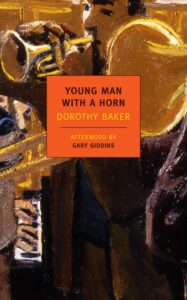
Dorothy Baker, Young Man with a Horn (1938)
Baker claimed as musical inspiration for this first jazz novel an already iconic white trumpeter, Bix Beiderbecke, dead at 28 in 1931 from drinking and, if you were in the tribe, the need to suffer too many commercial philistines. She set her tale in the era of hot jazz before swing, an anti-commercial ideology (as with grunge much later) yet to move from the margins, clear how jazz functioned as a Trojan horse for dissident modernity. Her female protagonist, Amy North, an aspiring psychiatrist who wrote “white-hot lyrics heavily inspired from Baudelaire,” kept reproductions of female nudes by Gaugin, Cézanne, and Matisse in her bedroom because she was attracted to women. Baker’s critic-without-the-byline sense of race, gender, and class in jazz mattered. She and her protagonists idealized moments when they could “push out farther than usual,” with veiled hope for the future.
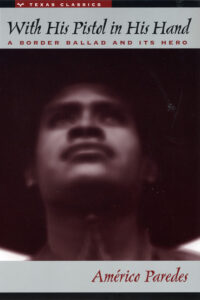
Américo Paredes, “With His Pistol in His Hands”: A Border Ballad & Its Hero (1958)
“I am the hand with the death grip / That murders and surprises.” These were lines from a corrido, the outlaw-oriented story songs of what Paredes termed “Greater Mexico”—over the border of land seized by the U.S. or in the sentiments that conquest provoked. Paredes set out not so much to capture the cultural flow as to swell it. First, he threatened his book’s publication, in the politics of the 1950s, by defining Texas rangers as “Americans armed and mounted and looking for Mexicans to kill.” The man with the pistol, and eventually the ballad, was border Mexican Gregorio Cortez, who in 1901 killed the sheriff who shot his brother and fled, escaping capture for an improbably long time. Paredes recounted the legend, details to make “your neck-feathers rise.” This ethnomusicology, eventually a film, too, centered on disparities between anti-modern, patriarchal folk respectability and corrido culture’s proto-gangsta rap pleasures.
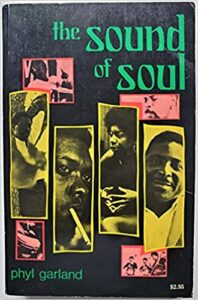
Phyl Garland, The Sound of Soul (1969)
Family ties anchored the analysis of this Ebony writer’s account of soul at the height of Black Power and Aretha crossover. Garland grew up with a jukebox in the living room, records like “After Hours” by Avery Parrish with Erskine Hawkins’s band, a lot of Dinah Washington, Nat Cole fighting it out with Muddy Waters. Not all of this was soul as it was defined in 1969, but it belonged to the same family. Garland’s reporting uncovered other family stories. Nina Simone, asked about her classical instruction, told her, “I was colored long before that!” and explained how she’d sung gospel, jazz, and blues with her mom. It would take Guthrie Ramsey, in Race Music, to theorize such familialism as musicology; Garland declared herself an amateur. But her centrist instincts were structurally revisionist.
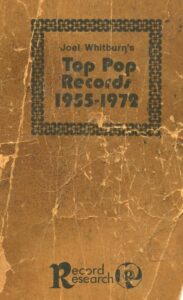
Joel Whitburn, Top Pop Records 1955-1972 (1973)
From this, Whitburn went on to publish books on Top R&B Records, Top LPs, Top Country, Top Easy Listening, etc. Tin Pan Alley had the sheet music standard, sung by a range of performers. Jazz had the discography, centered on musicianship in the studio. Pop/rock, instead, was about a unique record featuring one performer, concoctions ratified by airplay. To get a song, another song, a concert worth of songs, onto the charts was to visit the Promised Land. Joel Whitburn, out in Wisconsin, kept the ledger sheet of who had passed through the gates, how high they’d ascended, and how long they had been permitted to remain.
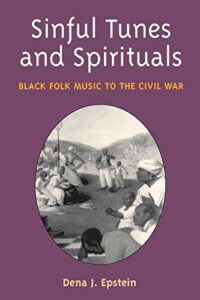
Dena Epstein, Sinful Tunes and Spirituals: Black Folk Music to the Civil War (1977)
An Illinois librarian in 1953 decided to read through “slave narratives, travel accounts, memoirs, letters, novels, church histories, and polemics on slavery,” everything apart from newspapers, for pre-1867 references to African American music, then two dozen years later published the results in a book that has been cited ever since. Why do we get to marvel at a sentence from a New Orleans visitor in 1819, that “on Sabbath evening the African slaves meet on the green, by the swamp and rock the city with their Congo dances”? Because Epstein found it in a pseudonymously published 1824 collection, paging through yet another old tome—“when I least expected it, a significant document would be uncovered.”
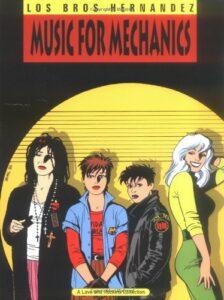
Los Bros Hernandez, Music for Mechanics (1985)
A bit over a hundred pages into the second massive collection of Jaime Hernandez’s Locas stories, a character asked the main protagonists, Maggie and Hopey: “So, when did you decide punk was over for you? When it was time for a change?” This particular comic strip, anthologized in 2009, had been drawn in 1999. The friends and the Love and Rockets books they appeared in dated to the early 1980s. And the punk allegiance was all 1970s. “Never. It’s something that stays with you forever,” Maggie Chascarrillo replied. “It’s like in everything you do. Like, I dunno, when you drink coffee in the morning.” Each panel offered further details of expression, posture, and style that made the man asking not punk, his friends lingeringly so even as bodies and hair filled in. Lining characters, Jaime and his brother Gilbert drew out countless subcultural meanings.

Kevin Young, The Grey Album (2012)
Young, a well-known author who edits the New Yorker poetry section and runs the National Museum of African American History and Culture, might seem misplaced here—no outsider at all. But consider this book, named after the full-length DJ Danger Mouse mash-up of Jay-Z’s Black Album, lyrically, and the Beatles’ so-called White Album, musically, a fellow traveler’s journey through the ways our sense of popular music can be reshaped with a mash-up of past and present, not to mention Black and white. Grey Album, topically expansive as Fred Moten but looser stylistically, engaged everything from the difference between dialect and vernacular in Paul Lawrence Dunbar’s poetry of masks and caged bird song to the “Crazy” blues of both Mamie Smith and Gnarls Barkley, finding kinship between post-soul dialectics and the strategic refusals of Young’s exuberantly “lying” pre-soul heroes. Here, then, is a particularly American place to end.
__________________________________

Songbooks: The Literature of American Popular Music by Eric Weisbard is available now from Duke University Press.
Eric Weisbard
Eric Weisbard is associate professor of American Studies at the University of Alabama and co-editor of Journal of Popular Music Studies. His books include the new Songbooks: The Literature of American Popular Music (Duke U Press, 2021); Top 40 Democracy: The Rival Mainstreams of American Music (U of Chicago Press, 2014), which won the Woody Guthrie Prize for best music book from IASPM-US; and Use Your Illusion I and II (2007) in the Bloomsbury 33 and 1/3 series. He organized the Pop Conference from its inception in 2002 through 2018, editing three books of conference writing: This Is Pop, Listen Again, and Pop When the World Falls Apart. At the museum Experience Music Project, he co-curated the exhibit “Disco: A Decade of Saturday Nights.” And before that, he was a rock critic: music editor of the Village Voice, record reviews editor for Spin, editor of the Spin Alternative Record Guide, and a writer for Spin, the Voice, and other alt-weeklies, plus the New York Times once in a while and, strangest of all, GQ. For that writer, see the material collected on Rock’s Backpages



















